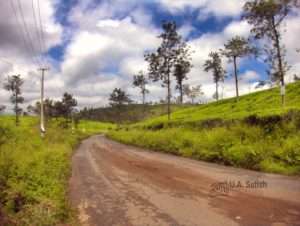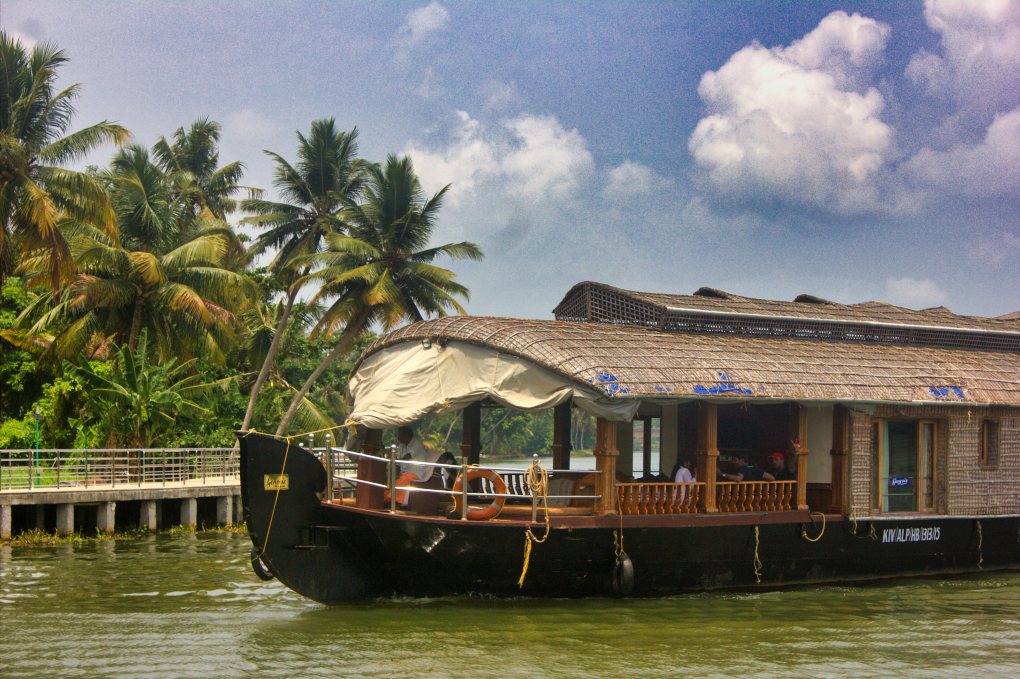Alappuzha attracts many travellers from around the world who look for its beautiful beaches, canals and lakes. The first thing we did after reaching Alappuzha was to go on a houseboat cruise. The cruise took us past the villages and fields of Kuttanad.
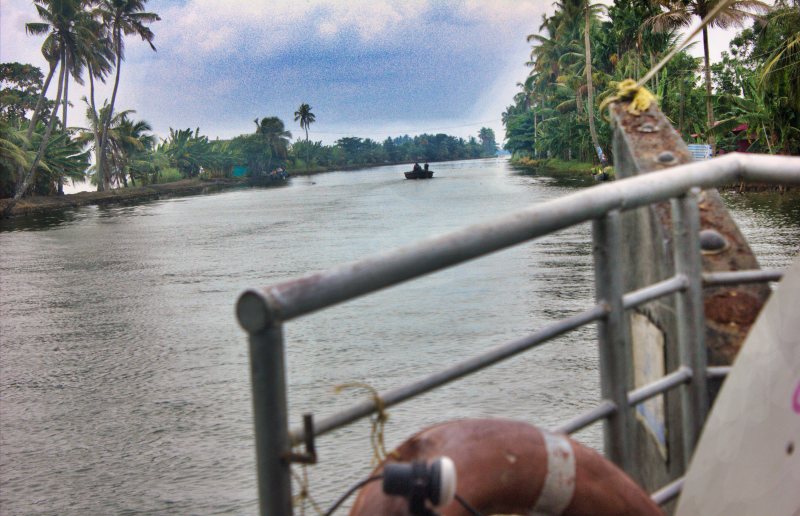
Rice Fields
Kuttanad is the second-biggest rice producing area in Kerala after Palakkad. The rice fields of Kuttanad are below sea level by 1.2 to 3m (4 to 10 ft). The land was reclaimed from the lake centuries ago. The water is kept out with the help of bunds and dykes. The land is flat without ups and downs. Apart from farming, fishing and tourism are the main income generators in Kuttanad.
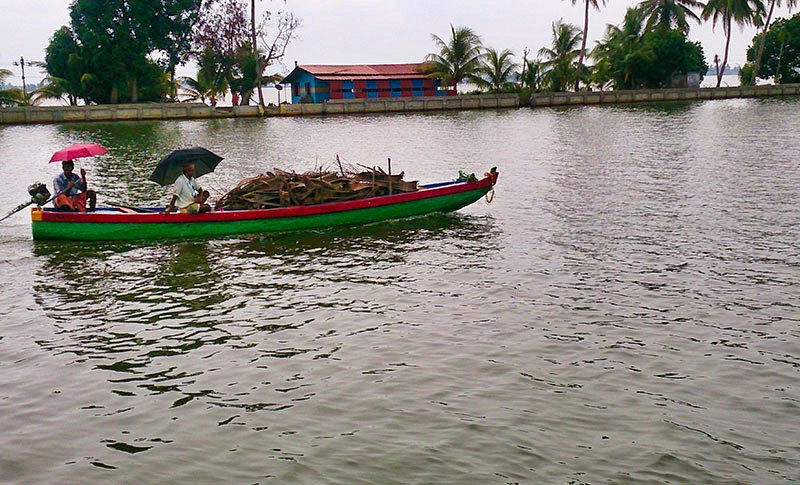
Cruise in Houseboat
Our houseboat was large and equipped with modern comforts. There was air-conditioning and an entertainment system with satellite TV. The bedroom boasted of an en suite bath. A chef was on board and he cooked a delicious Kerala lunch for us. The fare for lunch included Kuttanadan Konchu {giant freshwater prawns). We bought the prawns from a lakeside shop during the cruise.
Among the non-veg dishes, Kuttanad Duck Curry is justly famous. The duck curry can be called the king of Kuttanad cuisine. Another special dish is the Karimeen Pollichathu. The chef wraps the Karimeen in banana leaf (with coconut milk and masalas) and roasts it in a pan.

The water in the lakes turns saline during the summer months due to ingress of sea water. But when it starts raining in June, sea water retreats. At times of heavy rains, boat cruises come to a stop. The salinity of the Punnamada Lake has come down after construction of the Thanneermukkam salt water regulator (bund), leaving the lake almost a freshwater system. Studies reveal that the release of untreated sewage degrades the ecosystem of Vembanad Lake in Alappuzha and Kottayam districts. The lake is facing environmental challenges due to recurrent floods, pollution, gradually shrinking area and proliferation of water hyacinths.
Alappuzha is famous as Venice of the East with its many canals and boats. Big boats called Kettuvallams transported rice and spices. Kettuvallams have now been turned into houseboats. Alappuzha boasted of a port for exporting spices and coir to Europe and the Arabian Gulf. But with the rapid growth of Kochi port, maritime trade skipped Alappuzha and moved to Kochi.
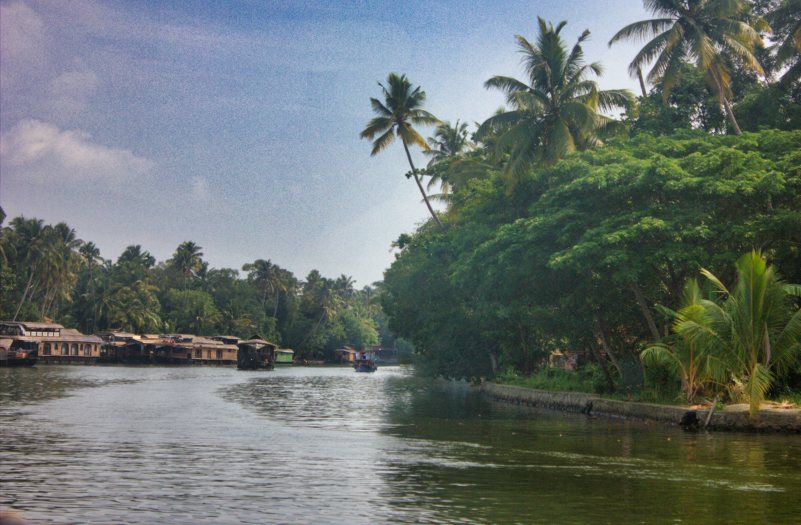
History of Alappuzha
Raja Kesavadas was the Dewan of Travancore during the reign of Karthika Thirunal Rama Varma. He developed Alappuzha town in the second half of seventeenth century. It was a planned city, with two parallel canals connecting Arabian Sea and Vembanad lake. After Madras, Alappuza was the second largest port in South India. The port handled export of pepper, ginger, copra, coir etc. The town attracted settlers from Gujarat, Rajasthan, Maharashtra and Madras. The settlers helped in enlarging the export trade.
James Darragh and Henry Smail established the first coir factory in Alappuzha in 1859, Darragh Smail & Co. Following this, companies like Volkart Brothers, Aspinwall, Madura Co., William Goodacre and Bomaby Co. set up coir factories in Alappuzha. The units employed thousands of workers.
After Independence, the Eurpeans returned to their home countries. Trade union strikes and agitations impacted growth of the coir industry in Alappuzha.
Alappuzha Town
The roads in Alappuzha are clean. The canal banks also looked tidy. But water hyacinths (African Payal) choke certain stretches of the canals.
I paid a visit to my old college in Alappuzha, Sanatana Dharma College. I studied there for two years, prior to graduation. It was a holiday and there were not many people around. The main building looked the same. Painting work was in progress.
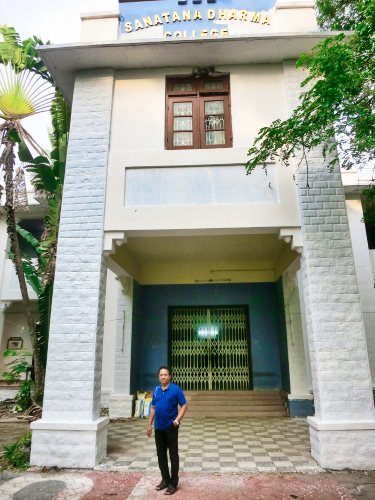
Next stop was Leo XIII High School from where I passed my SSLC examinations. The school was established in 1889. The school got its name from Pope Leo XIII who led the Catholic Church from 20 February 1878 until his death in July 1903, at the age of 93. Jesuit priests ran the school when I studied there. The football ground seemed to have lost its goal posts. There were cricket nets at one end. The main building is a heritage structure and apparently in good condition.

Alappuzha has many bridges across its canals. I have shown below photos of two old bridges, Kochukada Palam and the old Muppalam.
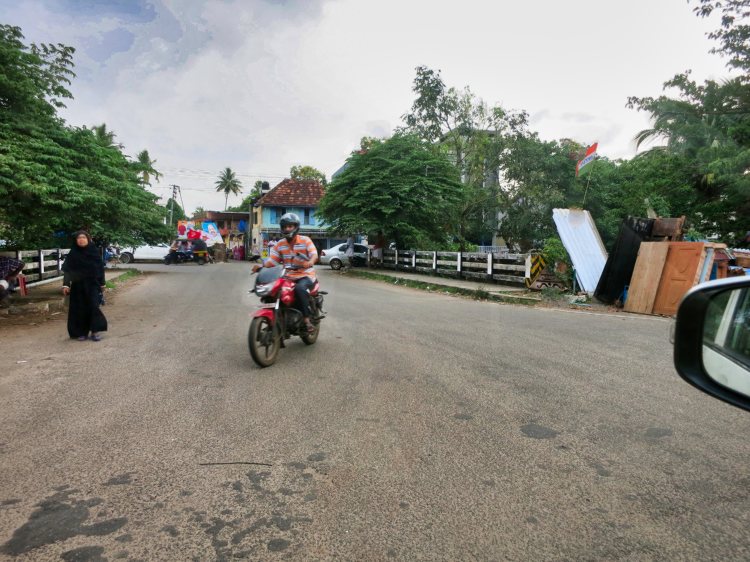
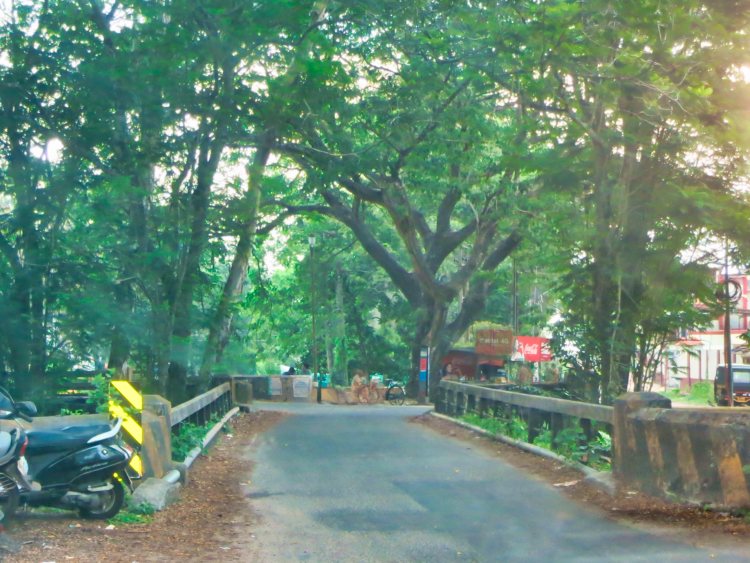
Alappuzha Beach
The lighthouse in Alappuzha, erected in 1862, is one of the oldest in Kerala. Its revolving light can be seen far out into the sea and is a focal point at night for ships and fishing boats. It is painted red and white. Visitors can climb up the lighthouse between 15:00 and 16:30 hrs on weekdays.
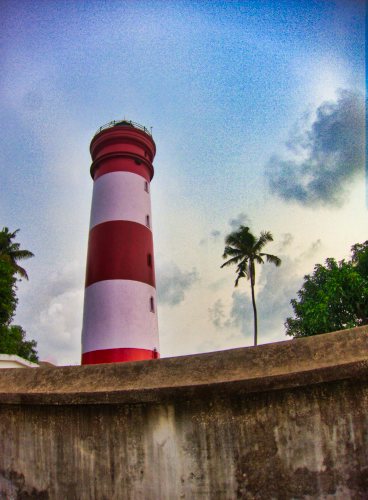
The old pier in Alappuzha beach disintegrated after closure of the port. Now only its skeletal remains are visible. A crowd had descended on the beach. Construction work was going on for an elevated road by the beach.
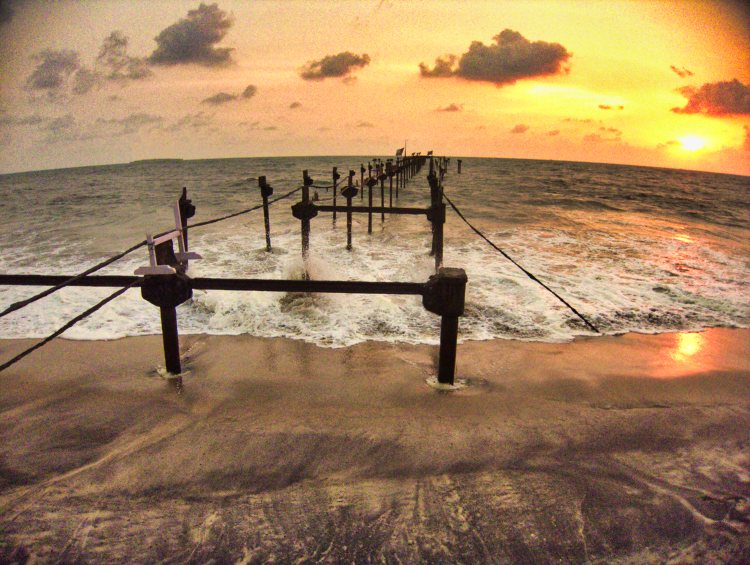
If you liked the post, you could…
Join more than 5,000 fans of UASATISH by liking us on Facebook, or follow us on Twitter and Instagram.
Related Posts
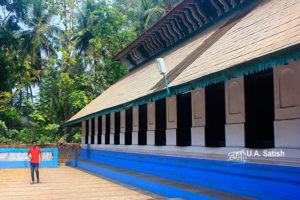 Odathil Palli in Thalassery
Odathil Palli in Thalassery